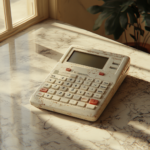If you’re diving into the world of retro gaming, you might find yourself exploring tools like compressors designed for the Nintendo Game Boy Advance (GBA) and Nintendo DS consoles. Developed by Cue, these compressors are essential for optimizing game files and ensuring smooth gameplay. This guide, brought to you by Market Blick, explores the ins and outs of using these compressors effectively.
What Are Compressors for Nintendo GBA/DS Consoles by Cue?
Compressors for Nintendo GBA/DS consoles by Cue are software tools specifically crafted to reduce the size of game data files. These tools are pivotal for:
- Storage Optimization: Compressors allow developers and users to fit more data within limited storage capacities.
- Performance Enhancement: Properly compressed files can improve loading times and overall system efficiency.
- Game Modding: Modders often rely on these tools to alter game data without exceeding system limits.
With the Nintendo GBA and DS offering limited memory, Cue’s compressors have become an invaluable resource for enthusiasts and developers alike.
Why Use Cue’s Compressors?
Cue’s compressors are renowned for their efficiency and reliability. They provide a seamless way to compress files while preserving game integrity. Whether you’re a casual gamer or a seasoned developer, these tools ensure:
- Minimal loss of data quality.
- Compatibility with GBA and DS architectures.
- Easy integration into workflows.
Market Blick recommends using these compressors for anyone looking to delve deeper into the technical side of Nintendo’s handheld consoles.
Setting Up Cue’s Compressors
Before using these compressors, you need to set them up correctly. Follow these steps to get started:
Step 1: Download the Compressors
Cue’s compressors are typically available as downloadable software packages. Ensure you obtain them from a reputable source.
Step 2: Extract the Files
Once downloaded, extract the compressed files to a designated folder on your computer. Use tools like WinRAR or 7-Zip for this process.
Step 3: Prepare Your Game Files
Ensure your game files are ready for compression. They should be in their raw, uncompressed format.
Step 4: Install Required Software
You may need additional tools or runtime libraries, depending on the version of Cue’s compressors. Check the documentation for specific requirements.
How to Use Compressors for Nintendo GBA/DS Consoles by Cue
Using Cue’s compressors involves a straightforward process. Here’s a step-by-step guide:
Step 1: Open the Compressor
Locate and open the compressor software from your installation folder. Most versions feature a user-friendly interface.
Step 2: Load Your Files
Select the “Load” or “Open” option and navigate to your game files. Ensure you’re working with compatible file formats.
Step 3: Choose Compression Settings
Adjust the compression settings based on your needs. Cue’s compressors often include preset options for GBA and DS games.
Step 4: Start the Compression Process
Click the “Compress” button to begin. The software will process your files, reducing their size while maintaining integrity.
Step 5: Save the Compressed Files
Once completed, save the compressed files to a designated folder. These are now ready for use in your gaming projects.
Best Practices for Using Compressors
To maximize the effectiveness of Cue’s compressors, consider these best practices:
Use Backups
Always create backups of your original game files. Compression processes can occasionally result in data loss if not performed correctly.
Test Compressed Files
After compressing, test the files on your GBA or DS emulator. This ensures they function as intended without glitches.
Stay Updated
Keep your compressor software updated to access the latest features and compatibility improvements.
Leverage Documentation
Cue’s compressors often include detailed manuals or readme files. Refer to these for troubleshooting and advanced tips.
Troubleshooting Common Issues
Even with the best tools, issues may arise. Here are some common problems and solutions:
Problem: Compression Fails
- Solution: Ensure your files are in the correct format and check for corruption. Reinstall the compressor if necessary.
Problem: Files Don’t Work on Console
- Solution: Verify compatibility with the specific GBA/DS model or emulator you’re using.
Problem: Output Files Are Too Large
- Solution: Adjust compression settings to achieve a smaller size without sacrificing quality.
Exploring Advanced Features
Cue’s compressors offer advanced features for experienced users:
Custom Compression Levels
Adjust the compression ratio to balance file size and quality.
Batch Processing
Compress multiple files simultaneously to save time.
Integration with Development Tools
For developers, these compressors can be integrated into workflows, streamlining the game development process.
The Role of Market Blick in Promoting Gaming Tools
At Market Blick, we emphasize the importance of utilizing tools like Cue’s compressors to enhance your gaming and development experiences. By optimizing game files, these compressors not only preserve nostalgia but also push the boundaries of what’s possible with retro gaming.
Conclusion
Learning how to use compressors for Nintendo GBA/DS consoles by Cue opens up a world of possibilities for gamers and developers. From optimizing storage to enhancing gameplay, these tools are indispensable. By following this guide from Market Blick, you can harness the full potential of Cue’s compressors, ensuring your gaming projects reach new heights.







